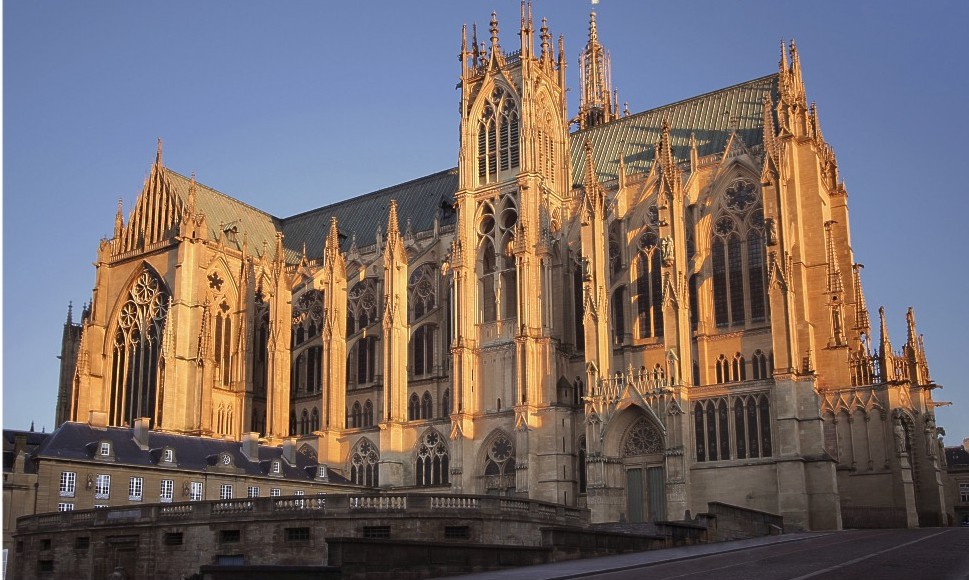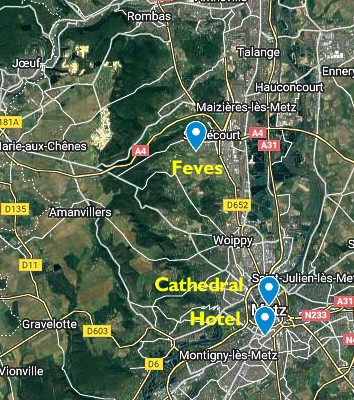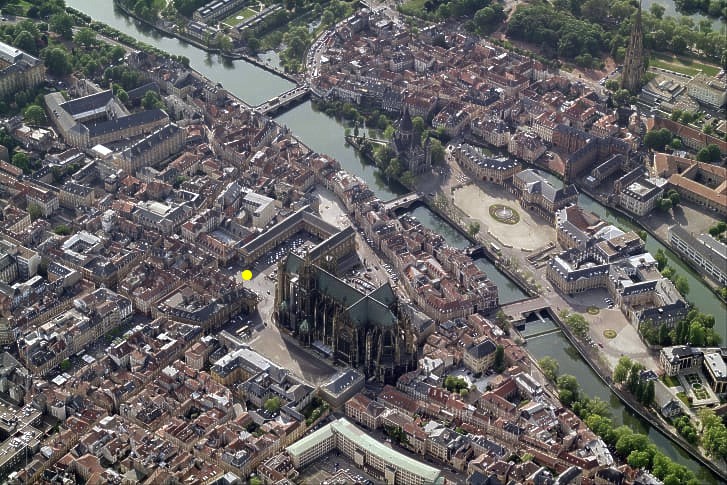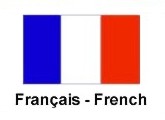God's Lantern and the Gothic Style Church

Metz' 800-year-old St. Etienne cathedral bathed in late-afternoon sunlight
St. Etienne
I am neither much interested in architecture nor religion, but the old churches of the United Kingdom and Europe certainly hold
my attention. When it comes to beauty, I find the rococo style prevalent in Bavaria and Austria to be the most appealing. Still, the
huge Norman and Gothic churches are certainly impressive.
Paris' Notre Dame, the Chartres Cathedral, York's Minster and London's Westminster Abbey are some of the best known of the latter
category, but my preference is the cathedral in Metz. It is a spectacular building that in most regards outshines its more famous
sister in Paris. When lit at night, St. Etiennes's 6,500 square meters of stained glass - the most of any of the world's churches -
prompts her nickname "God's Lantern."

Most large stone churches are gray-to-black in color. In contrast, St. Etienne's (St. Stephen's) is a pleasing golden hue.
The color is created by the oxidized iron in the locally-quarried Jaumont limestone that has been used in many other buildings
in Metz. Obtained in nearby Malancourt-la-Montagne, jaumont is a contraction of the French words jaune and montagne, meaning
yellow mountain.
In 1220, Pope Honorius III gave Metz bishop Conrad de Scharfenberg permission to raise money to build a new church. Three
centuries would pass before construction was complete. But those difficult early years did not have an effect on the
year-long party begun in 2020 to celebrate the cathedral's 800th year.
The quarries for the cathedral limestone appear as yellow patches in the upper-left of this satellite view of the land near Metz. The locations of Fèves, the cathedral and the Residhome hotel where most of the American visitors stayed in 2019 are marked.
But various religious structures had existed at the site centuries before. When Attila the Hun burned the city to the ground in 451,
it was noted that a shrine at the site dedicated to St. Etienne had managed to survive. At the time of the Pope's approval for
building St. Etienne, a round-shaped church called Notre-Dame-la-Ronde stood on the site. The new structure began at the edge of
the round church and continued in a northeasterly direction. Over time, changes were made to blend the two. The part from the main
entrance upon which the city's summer-evening light show is projected up to the towers on each side of the nave still contain parts
of the original church which was dedicated to Mary.
While its honey color and incorporation of an earlier church into its structure are out of the ordinary, St. Etienne is unusual in
several other regards. While it not only has a surprising amount of stained glass, portions of the glass date to all periods of the
church's existence, down to the present. The southwest-to-northeast orientation is also unusual for a Gothic church as the naves of
most lie on an east-west line. It is also unusually tall and slender.

The orientation of the cathedral is hard to discern from this photo because most of Metz' streets are not aligned with the principal compass directions. However, the shadows cast by the cathedral and other buildings in this late-afternoon photo provide a clue as to which direction is west. The yellow dot to the left of the cathedral is where people congregate to watch the 11 p.m. light shows that began in the summer of 2017.

